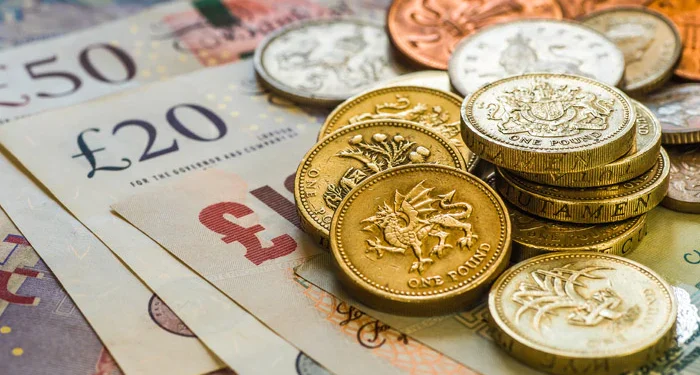The British pound experienced its most challenging month against the U.S. dollar in a year during September, and experts are forecasting a lackluster outlook for the remainder of the year due to diminishing growth prospects.
Pound Versus the U.S. Dollar
In a notable decline, sterling fell by 3.75% against the U.S. dollar throughout September, marking a decline not seen since the end of the previous summer. This downturn is reminiscent of the turbulence witnessed when the U.K. currency faced political and economic uncertainties followed by the short-lived “mini-budget” announcement by former Prime Minister Liz Truss, which drove the pound to a record low.
The fluctuations in exchange rates over the past two years have been strongly influenced by interest rate expectations, with higher rates generally making a currency more appealing for foreign investment. Market expectations for peak U.K. interest rates surged to as high as 6.5% over the summer. This increase was driven by the persistently high inflation rates in the country, even as other developed economies began to witness cooling consumer prices.
However, in September, the Bank of England broke its streak of 14 consecutive rate hikes, maintaining its key rate at 5.25%. Many economists and market observers quickly concluded that this rate might represent its highest point.
Pound Versus the Euro
In addition to its decline against the U.S. dollar, the pound also faced a decline of 1.26% against the euro last month, marking its weakest performance since December 2022.
Despite the European Central Bank signaling a halt to rate hikes, the euro’s performance against the pound reflects concerns about the U.K. economy’s recent buildup of recessionary risks, according to Jane Foley, chief FX strategist at Rabobank.
As the pound faces headwinds from both the U.S. dollar and the euro, market participants remain watchful of future developments in the currency’s performance against its major counterparts.
Outlook and Forecasts
Jim McCormick, macro strategist at Citi, pointed out that the Bank of England faces a challenging position, needing to balance weaker growth projections with persistently high inflation. He anticipates further weakening of the pound as a result.
Even as the Federal Reserve tightens monetary policy, the U.S. economy is expected to grow between 1.5% and 1.9% this year. In contrast, the euro zone, despite its largest economy, Germany, facing a recession, expects 0.7% growth.
Comparatively, the Bank of England predicts only 0.5% growth for the U.K., with the Organization for Economic Co-operation and Development (OECD) forecasting even lower expansion, nearing 0.3%. Although the outlook has improved compared to the previous year, the possibility of a mild recession remains a concern.
Research group Capital Economics forecasts a further decline in the pound to $1.20 by year-end, while Michael Cahill, G10 FX strategist at Goldman Sachs, shares a pessimistic outlook for the pound, predicting a trade below $1.20.
As uncertainty continues to surround the British pound, market participants remain watchful of future developments in the currency’s performance against its major counterparts.











